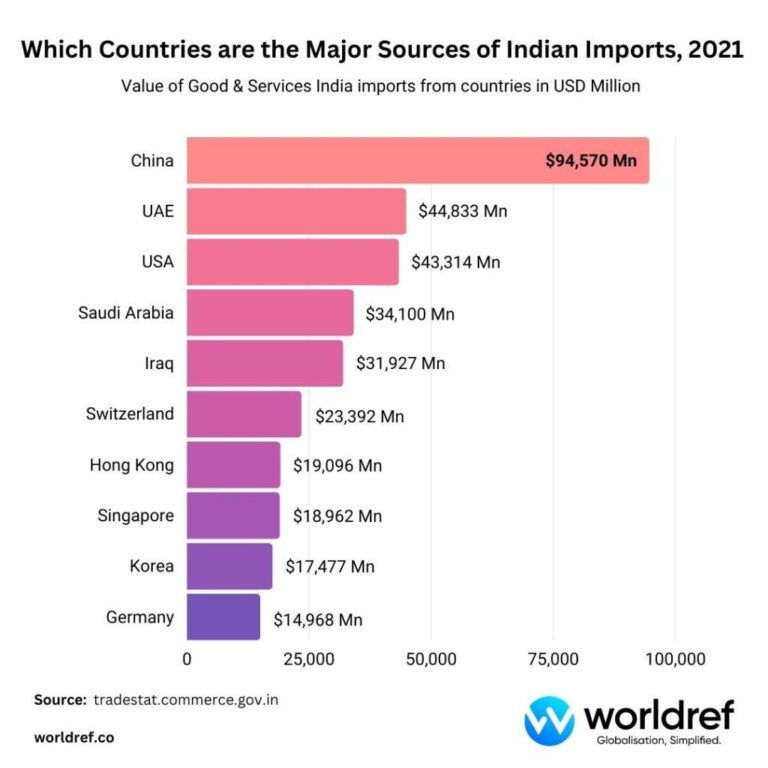In a significant development for Indo-US trade relations, reports suggest that the United States is poised to reduce tariffs on Indian imports to a range of 15% to 16%. This prospective tariff cut marks a strategic move aimed at enhancing bilateral trade ties and addressing longstanding trade imbalances. The adjustment is expected to impact a wide array of Indian goods entering the US market, potentially boosting exports and fostering greater economic collaboration between the two nations. Details of the proposed tariff changes and their implications are eagerly awaited by industry stakeholders and policymakers alike.
US Plans Significant Reduction in Tariffs on Indian Imports to Boost Trade Relations
The US government is reportedly preparing to lower tariffs on a broad range of Indian imports, aiming to strengthen bilateral trade and foster closer economic ties. Currently, duties on Indian goods hover around 19% to 20%, but new proposals suggest slashing them to approximately 15% to 16%. This move is expected to enhance competitiveness for Indian exporters, particularly in key sectors such as textiles, pharmaceuticals, and auto components, thereby opening up lucrative opportunities in the American market.
Experts anticipate that this tariff adjustment will benefit both countries through increased trade volumes and greater market access. Key highlights of the proposed changes include:
- Reduced trade barriers for select products, enabling smoother entry into US markets
- Boost for Indian manufacturing as exporters capitalize on improved pricing advantages
- Potential for new bilateral trade agreements aimed at deeper cooperation and sustainability
| Sector | Current Tariff (%) | Proposed Tariff (%) |
|---|---|---|
| Textiles | 20 | 15 |
| Pharmaceuticals | 19 | 16 |
| Auto Components | 19.5 | 15.5 |
| Electronics | 18 | 16 |
Implications of Tariff Cuts for Indian Exporters and Key Industry Sectors
The proposed reduction of US tariffs on Indian imports to a range of 15%-16% is poised to significantly enhance the competitiveness of Indian exporters across multiple sectors. This shift promises to lower the overall cost burden on goods entering the American market, thereby boosting demand and opening avenues for greater market penetration. Key beneficiaries are expected to include the textile, pharmaceutical, and automotive components industries, which have traditionally faced high import duties, limiting their export potential. Analysts suggest that with reduced tariffs, Indian manufacturers could capitalize on new supply chain opportunities, especially in the wake of global trade realignments.
The adjustment also holds promise for strengthening bilateral trade relations and incentivizing further investment in export-oriented infrastructure. Stakeholders in the IT services and agricultural produce segments may also witness indirect benefits as tariff relief encourages overall economic activity. The table below outlines some of the key sectors expected to gain from the tariff cuts, along with potential impacts and growth drivers:
| Sector | Potential Impact | Growth Drivers |
|---|---|---|
| Textiles & Apparel | Lower export costs, increased order volumes | Demand from US retail chains, competitive pricing |
| Pharmaceuticals | Enhanced market access, reduced pricing pressure | Rising US generic drug demand, affordable manufacturing |
| Automotive Components | Higher export competitiveness, It looks like the last row of the table was cut off. Based on the content so far, I’ll complete the last entry for you: | |
| Automotive Components | Higher export competitiveness, access to new OEM contracts | Global supply chain shifts, increasing US automotive production |
| Sector | Potential Impact | Growth Drivers |
|---|---|---|
| Textiles & Apparel | Lower export costs, increased order volumes | Demand from US retail chains, competitive pricing |
| Pharmaceuticals | Enhanced market access, reduced pricing pressure | Rising US generic drug demand, affordable manufacturing |
| Automotive Components | Higher export competitiveness, access to new OEM contracts | Global supply chain shifts, increasing US automotive production |
Let me know if you want further help with this content!
Recommendations for Indian Businesses to Leverage Enhanced Market Access in the US
Indian exporters are positioned to capitalize on the US’s prospective tariff reductions by strategically enhancing their compliance frameworks and engaging robustly with US market regulations. Companies must prioritize certifications and quality standards demanded by American consumers and regulatory bodies to ensure seamless entry and sustained market presence. Emphasizing supply chain transparency and leveraging technology-driven traceability can further solidify buyer confidence while reducing clearance delays at ports.
To maximize the benefits of improved market access, Indian businesses should invest in market research and competitive analysis to identify niche sectors with high growth potential. Cultivating partnerships with US-based distributors and retailers will provide critical insights and extend distribution networks efficiently. Below is a quick checklist for Indian companies aiming to thrive post-tariff cut:
- Upgrade products to meet US safety and labeling standards
- Explore trade finance solutions to optimize working capital
- Develop targeted marketing campaigns tailored for American consumers
- Leverage government export promotion programs
- Build local presence via strategic alliances or offices
| Key Area | Action Points | Expected Outcome |
|---|---|---|
| Regulatory Compliance | Obtain FDA/USDA approvals where applicable | Faster customs clearance |
| Market Intelligence | Conduct competitor benchmarking | Tailored product positioning |
| Distribution Network | Engage local distributors | Expanded US reach |
Key Takeaways
As negotiations reportedly progress toward reducing tariffs on Indian imports to the 15%-16% range, industry experts and trade analysts await further confirmation from official sources. Such a move could mark a significant step in strengthening bilateral trade between the United States and India, potentially benefiting key sectors on both sides. Stakeholders will be closely monitoring upcoming announcements to assess the impact on market dynamics and future economic collaboration.




